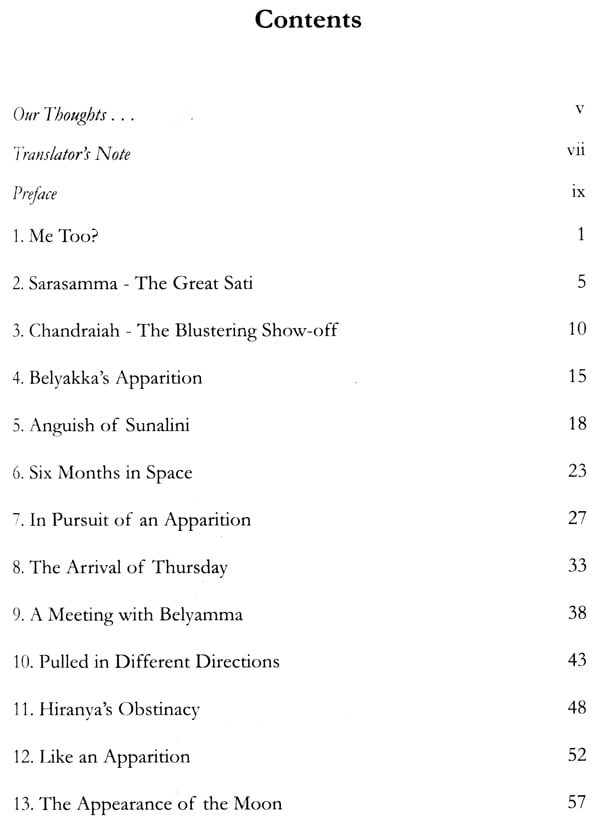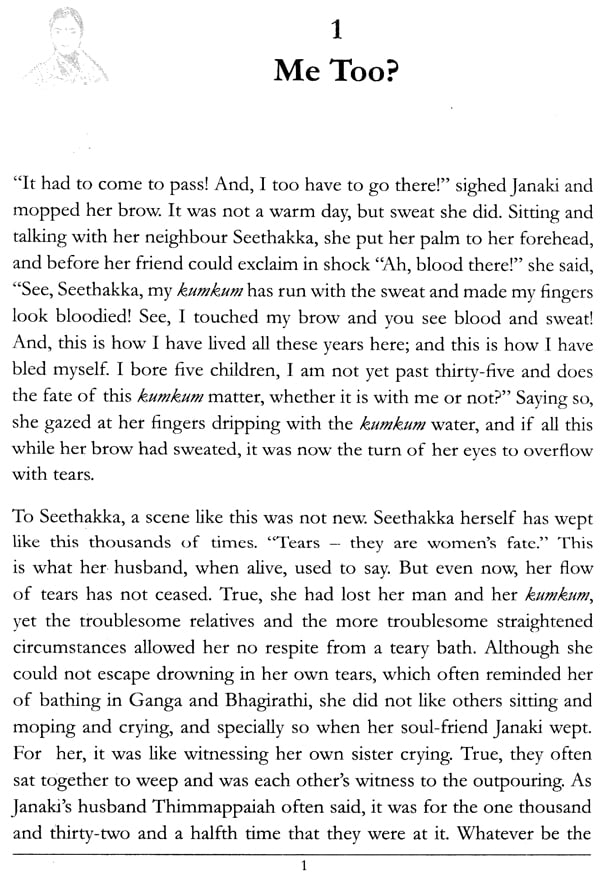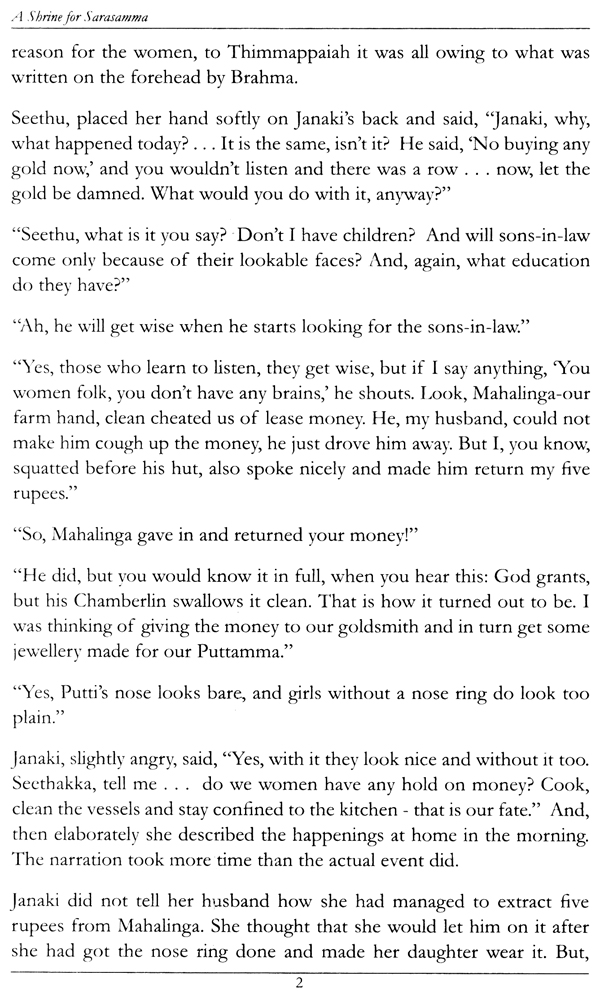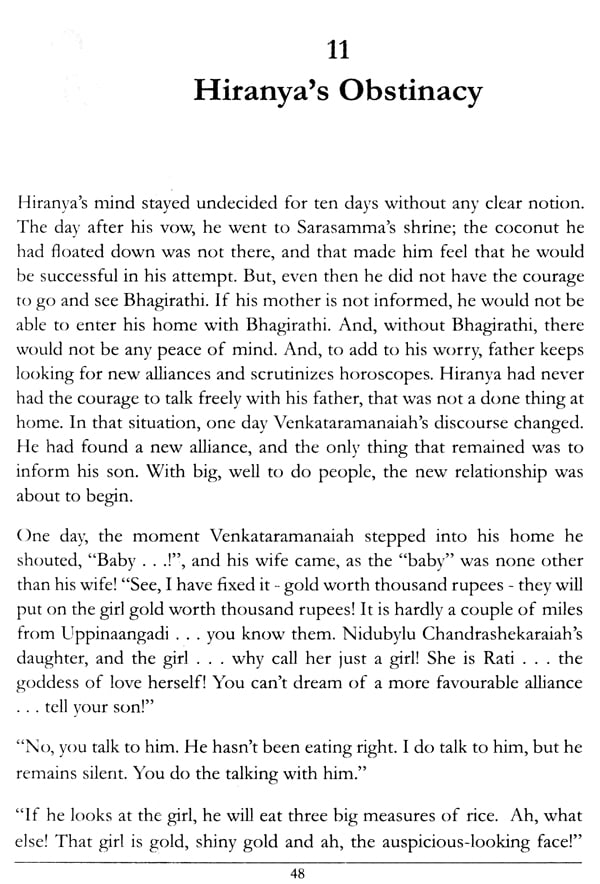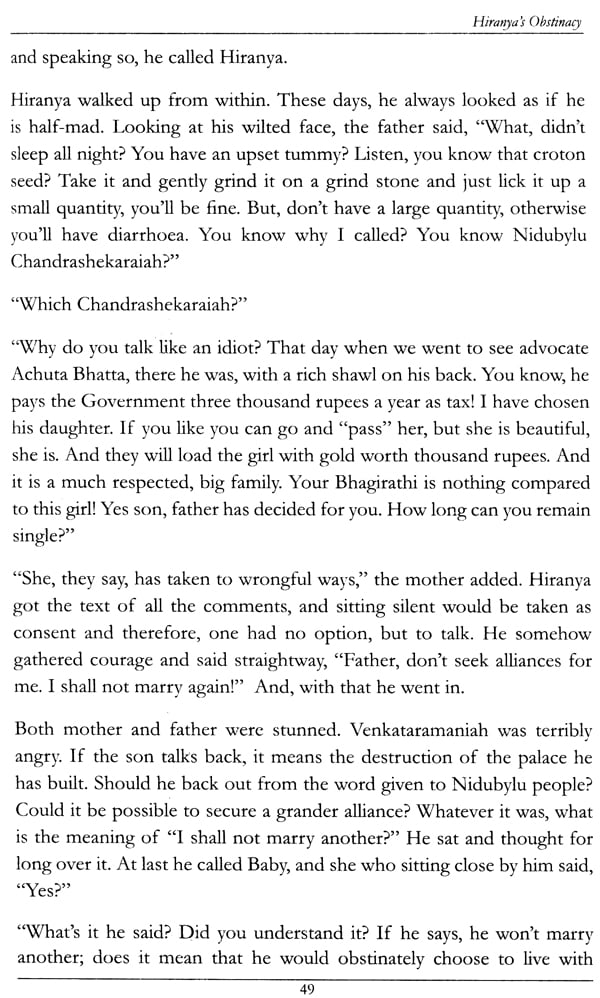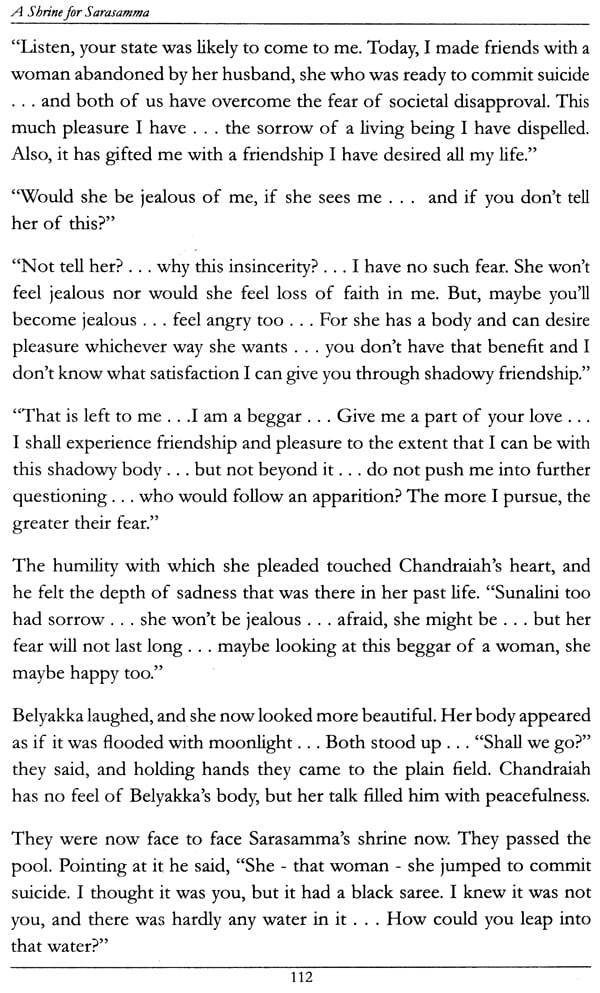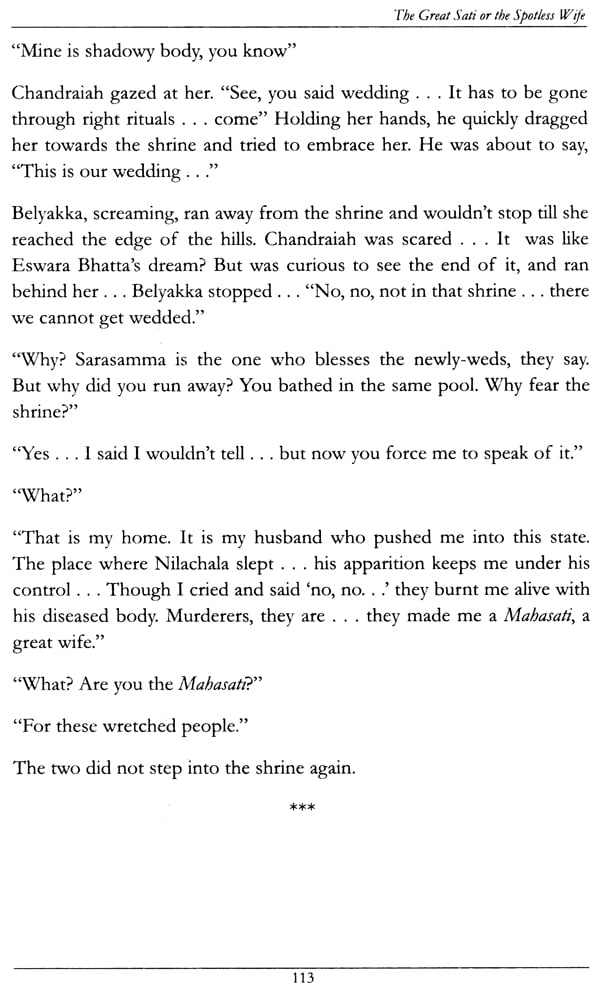
A Shrine for Sarasamma
Book Specification
| Item Code: | NAZ704 |
| Author: | K. Shivarama Karanth |
| Publisher: | Manipal Universal Press |
| Language: | English |
| Edition: | 2018 |
| ISBN: | 9789382460749 |
| Pages: | 128 |
| Cover: | PAPERBACK |
| Other Details | 8.50 X 5.50 inch |
| Weight | 160 gm |
Book Description
By relying on the Mahabharata, we are fabricating a conjugal morality which was non-existent during the days of the Mahabharata. The reason for this is that the societal life of our times is split clean, and we live two kinds of life. Our morality predates the time of Manu himself, and our ideal far exceeds that of Sita herself! And the values with which we assess others are of the time of Yamadharma Raja!
But life is not like that. It is, as in other places and at other times, full of evil; evil there is. There are probably two causes for this. One is understanding what sinfulness is. Fired by an intense ethical imagination, our mind, relying on imagination, calls that sinful which involves the morality of the flesh, and calls it a sin. But by naming it this way, sin has not reduced, and therefore we recall the olden times and long for Ahalya, Draupadi and Sita.
Sarasamma is a star of the olden days of Moodambylu or one similar to that. Our contemporary men "see" her.
Our narrow-mindedness and our half-open eyes do not see the reality of our contemporary life. Or, we see it, but think it is honorable to call it so. And therefore, what consolation is there for us? Treta and Dwapara are dead, and we, therefore, but see the high mountain ... like Rama and Krishna, and the picture of Rama and Krishna are drawn by those who worship them. Therefore, yesteryear's dirt cannot appear in the way dirt of our neighbor appears to us. And thus all curse this Kali Yuga.
Our conjugal morality is under this curse. Unable to see our own life, we Indians set out to educate the world, and see divorces in England and America, and people who marry for the 16th time. But there is a reason for this. The women there have not become corpses. They think - like men, they too have strong spinal columns and therefore, there are divorces. And as long as our girls live like corpses without backbones, our Ideal of devout wifehood lives uninterrupted.
The westerners do not attach much importance to the sins of others or to their sexual indulgence. With us, when four people meet, the talk incessantly is about "her incest" or "his philandering," etc. It is. We do such "good work"! If four decent men or women meet, the food of their talk is either a woman's lascivious looks or her incest. Is this a sign of healthy, adult minds?
Among westerners, people like Havelock Ellis and others have come forward, and they live own their "immoral life" openly. Ellis wants us all to undertake and change this view of morality. But we, whether we go by car or listen to the radio, the moment the issue of either figures, we say, ''Ah, mother Sita, there she is." We have not deeply looked into ourselves.
Has the Indian Medical Council talked about the number of cases of venereal disease? Has it given the numbers? What is its percentage? Do we have people who walk through villages, look at the vices of the orthodox and analyze their inner way of life? What is the percentage of unnatural sexual indulgence in India? If the numbers are collected and added together, India will not attempt to teach others anything. It is enough if it understands itself.
Book's Contents and Sample Pages
